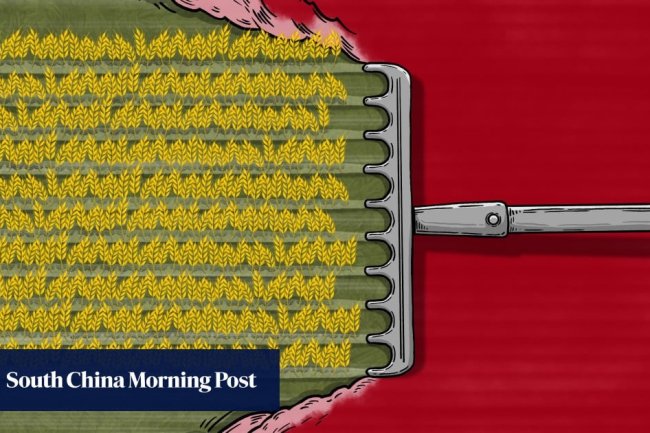Ukrainians with cellphones and machine guns are forcing Russia to change how it launches its drone attacks
2023.05.08 21:12Ukraine’s flexible and adaptive air defences have forced Russia to change its drone tactics.Instead of launching a few Iranian-made Shahed-136 kamikaze drones at a time, Russia is sending large salvoes and carefully routing them to avoid Ukrainian defences.Ukrainian interception rates have got “good enough that the Russians are now kind of saving up their Iranian production allocations until they have large amounts,” Justin Bronk, an air power expert at Britain’s Royal United Services Institute, said on an April episode of the Geopolitics Decanted podcast.Now Russia is launching “maybe 30 or 40” at a time, Bronk said.This marks yet another turn in the drone war between Russia and Ukraine. In the days after Russia invaded in February 2022, Ukrainian drones armed with anti-tank missiles or even home-made bombs wreaked havoc on Russian armoured columns.Then in late summer 2022, just as Ukraine seemed able to keep Russian air power at bay, Moscow began pounding Ukrainian in


Ukraine’s flexible and adaptive air defences have forced Russia to change its drone tactics.
Instead of launching a few Iranian-made Shahed-136 kamikaze drones at a time, Russia is sending large salvoes and carefully routing them to avoid Ukrainian defences.
Ukrainian interception rates have got “good enough that the Russians are now kind of saving up their Iranian production allocations until they have large amounts,” Justin Bronk, an air power expert at Britain’s Royal United Services Institute, said on an April episode of the Geopolitics Decanted podcast.
Now Russia is launching “maybe 30 or 40” at a time, Bronk said.
This marks yet another turn in the drone war between Russia and Ukraine. In the days after Russia invaded in February 2022, Ukrainian drones armed with anti-tank missiles or even home-made bombs wreaked havoc on Russian armoured columns.
Then in late summer 2022, just as Ukraine seemed able to keep Russian air power at bay, Moscow began pounding Ukrainian infrastructure with waves of cheap Shahed drones that overwhelmed Ukrainian air defences.
“Drip-feeding lots and lots of Shaheds for several months” also depleted Ukraine’s stockpile of air-defence missiles and shells, Bronk said.
In turn, Ukraine has formed mobile air-defence teams equipped with a variety of short-range and portable weapons, including self-propelled anti-aircraft guns like the Soviet-era Shilka and the German-made Gepard, shoulder-fired missiles like the US-made Stinger, and even Soviet-designed DShK heavy machine guns paired with searchlights, Bronk said.
This approach has proven remarkably successful. “Even just people with DShKs are getting much better with those weapons because they’ve had a lot of practice,” Bronk said. “As you learn how to lead targets, even crew-served, non-radar-led gunnery can be quite effective.”
Ukraine has also mobilised the public for the anti-drone war. “They’ve got some clever apps so where ordinary people can essentially quickly report in sightings of UAVs, missiles, and aircraft into a sort of centralised data-gathering function,” Bronk said.
Earlier in the war, Ukrainians used a repurposed government-services app to report Russian movements on the ground.
A similar system was used in World War II. During the Battle of Britain in 1940, civilian volunteers with the Royal Observer Corps reported sightings of German bombers to a centralised air-defence network.
Once the bombers flew past coastal radars and reached inland areas where radar coverage was sparser, ground controllers could use Observer Corps reports to track the raids and direct RAF fighters to intercept them.
Because Ukraine is so large – just a little smaller Texas – Russian drones have to fly a long way to strike targets deep inside the country, Bronk noted. While the Shahed-136 has an estimated range of about 1,550 miles, it only has a top speed of about 115mph.
“They’re quite slow,” Bronk said. “If you can build up a picture of where they’re going – which is not easy – there is often time to station mobile teams, to move them to the likely routes and shoot the drones down.”
Ukraine war: Wagner threatens Bakhmut withdrawal as drone attack targets Crimea
Naturally, Russia has changed its tactics. It has begun sending a few drones ahead of the main attack wave to attract the attention of Ukrainian anti-aircraft sites “and see what lights up,” Bronk said.
“If they manage to work out where the air defence is in a particular area, they’ll then change the routing of the main strike wave to try and avoid it. So that is both an example of Russia learning and adapting but also a testament to how effective Ukrainian defence measures now are.”
However, Ukraine’s mobile anti-drone teams are most effective against drones flying at lower altitudes on deep-penetration missions.
On the front lines, Russia can employ a variety of unstaffed aerial vehicles, ranging from small quadcopters to the Orlan-10, which flies at altitudes between roughly 5,000 feet and 16,000 feet and gathers real-time data to guide Russian artillery.
“The Orlan is one of the biggest problems because it can fly above the range of” portable air-defence missiles and anti-aircraft guns, Bronk said.
“Essentially what that means is that in order to shoot them down, Ukraine has to use radar-guided surface-to-air missile systems like the Osa or Buk. That’s one of the things that’s drawing so much of their ammunition capacity.”
Recently leaked US governments containing intelligence assessments from February warned that Ukraine is running out of ammunition for its anti-aircraft weapons, especially the surface-to-air missiles needed to counter Russian jets.
While Western countries have scrambled to provide more of that ammunition, dwindling supplies mean Ukraine will have to use its air-defence resources more judiciously – and as they have done since the war began, the Ukrainians will continue to improvise.
What's Your Reaction?













